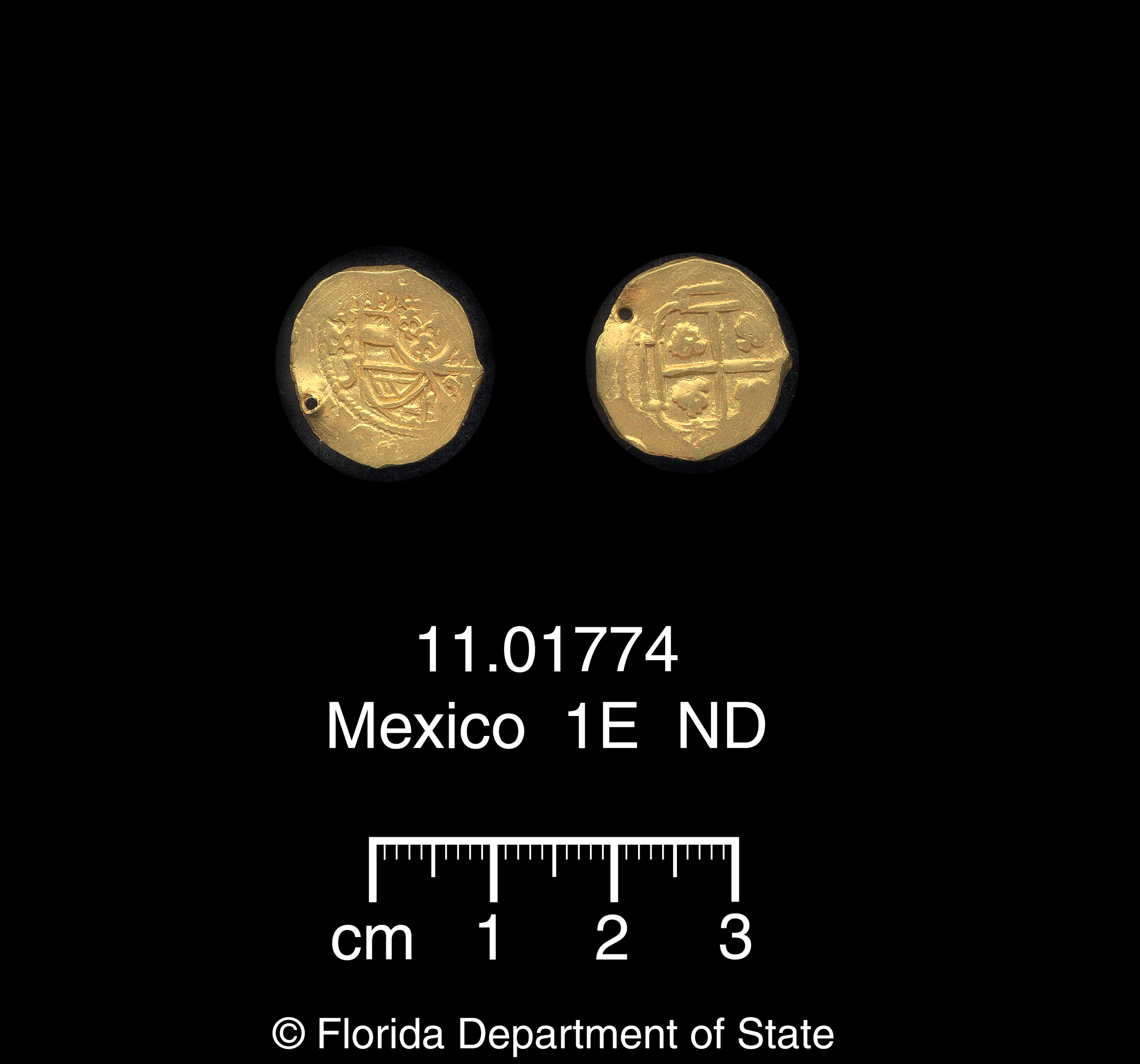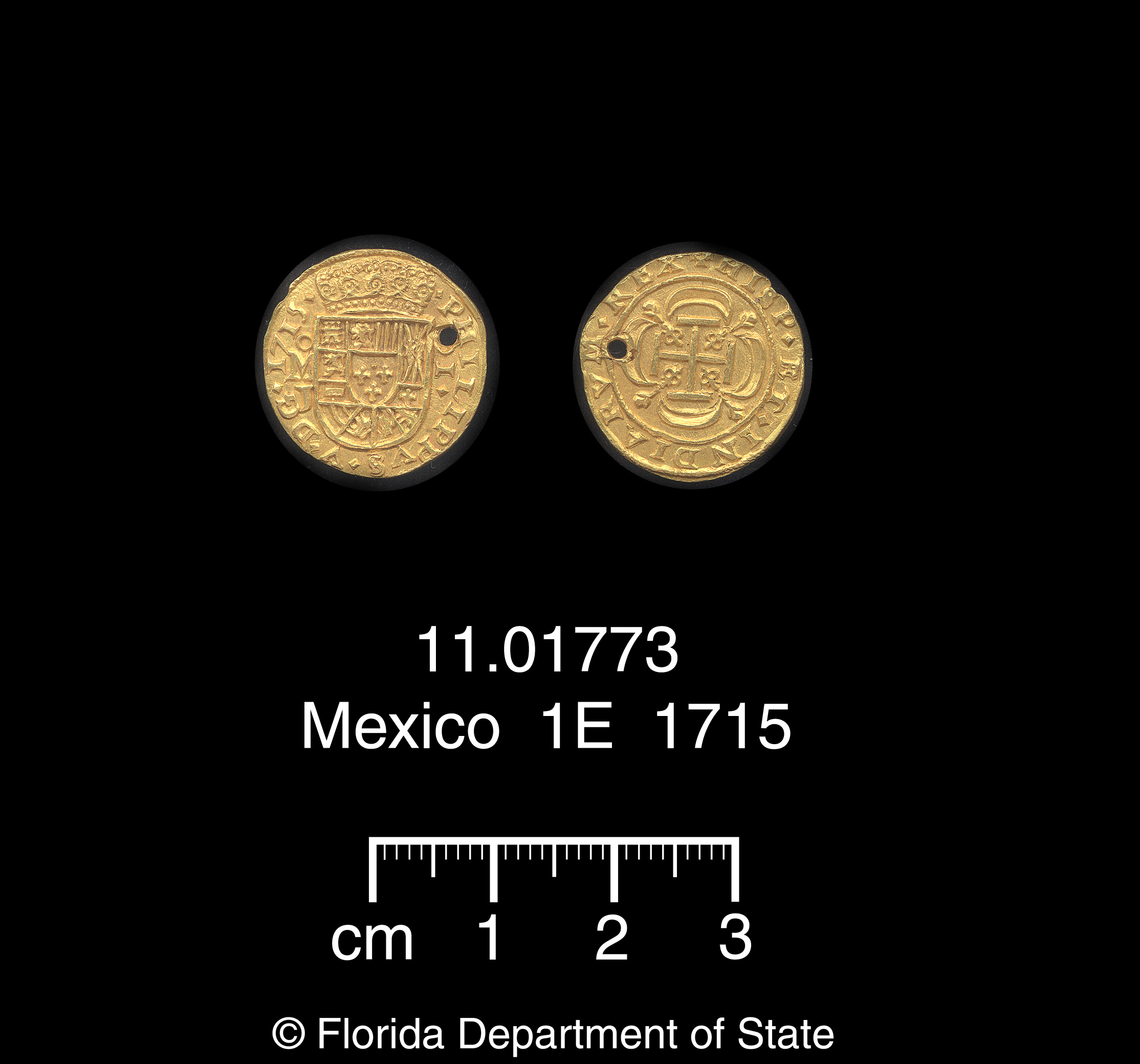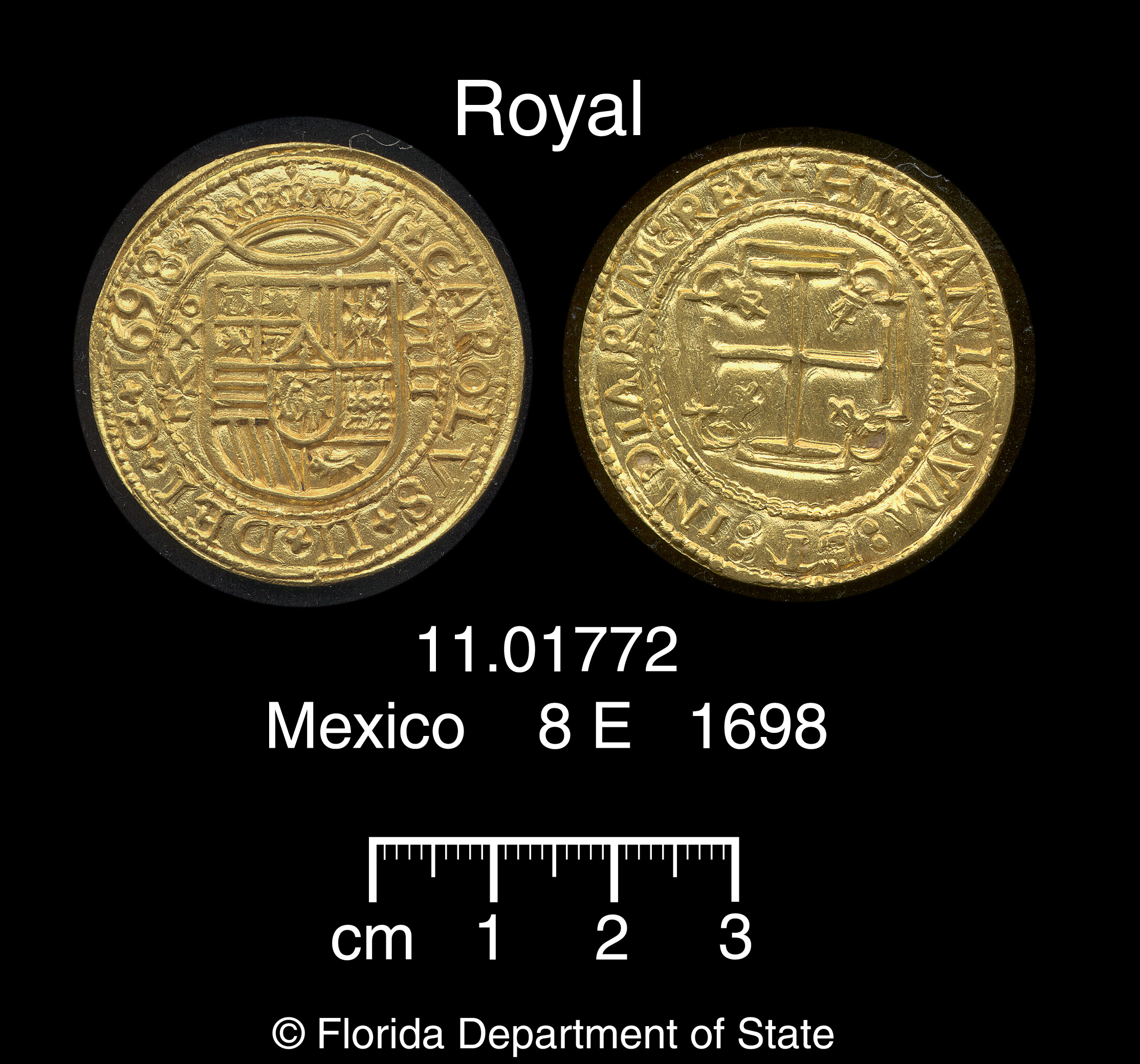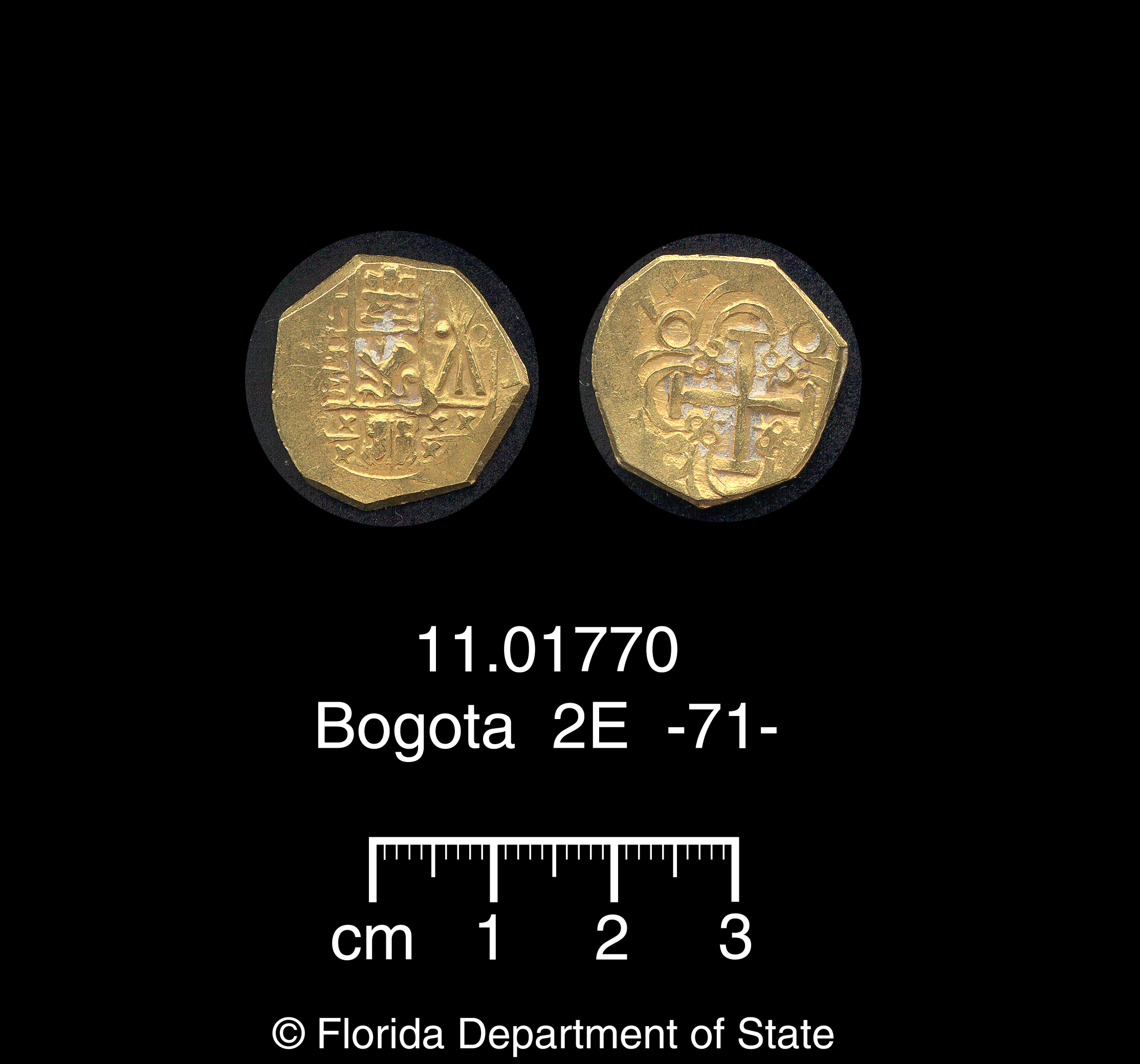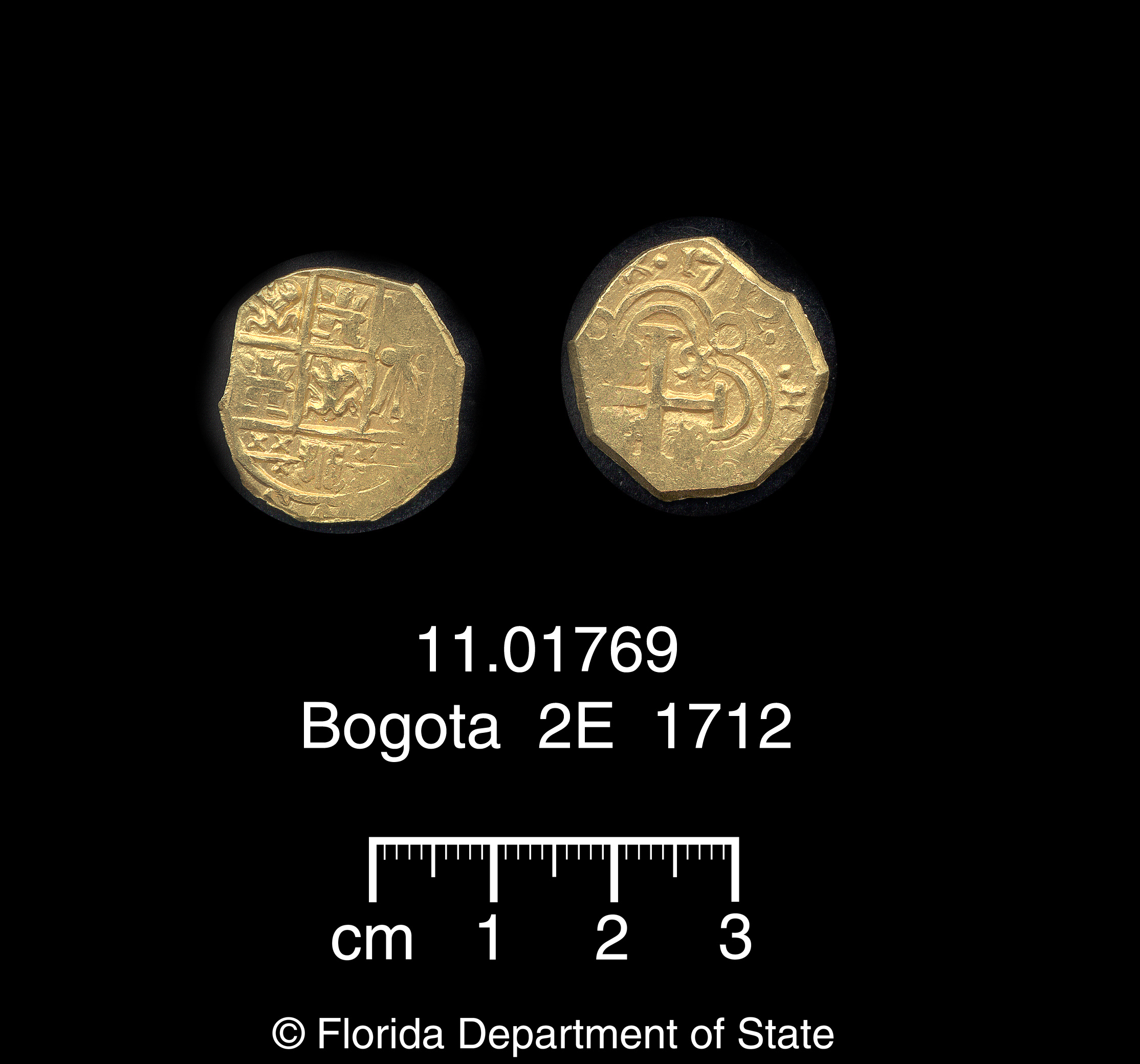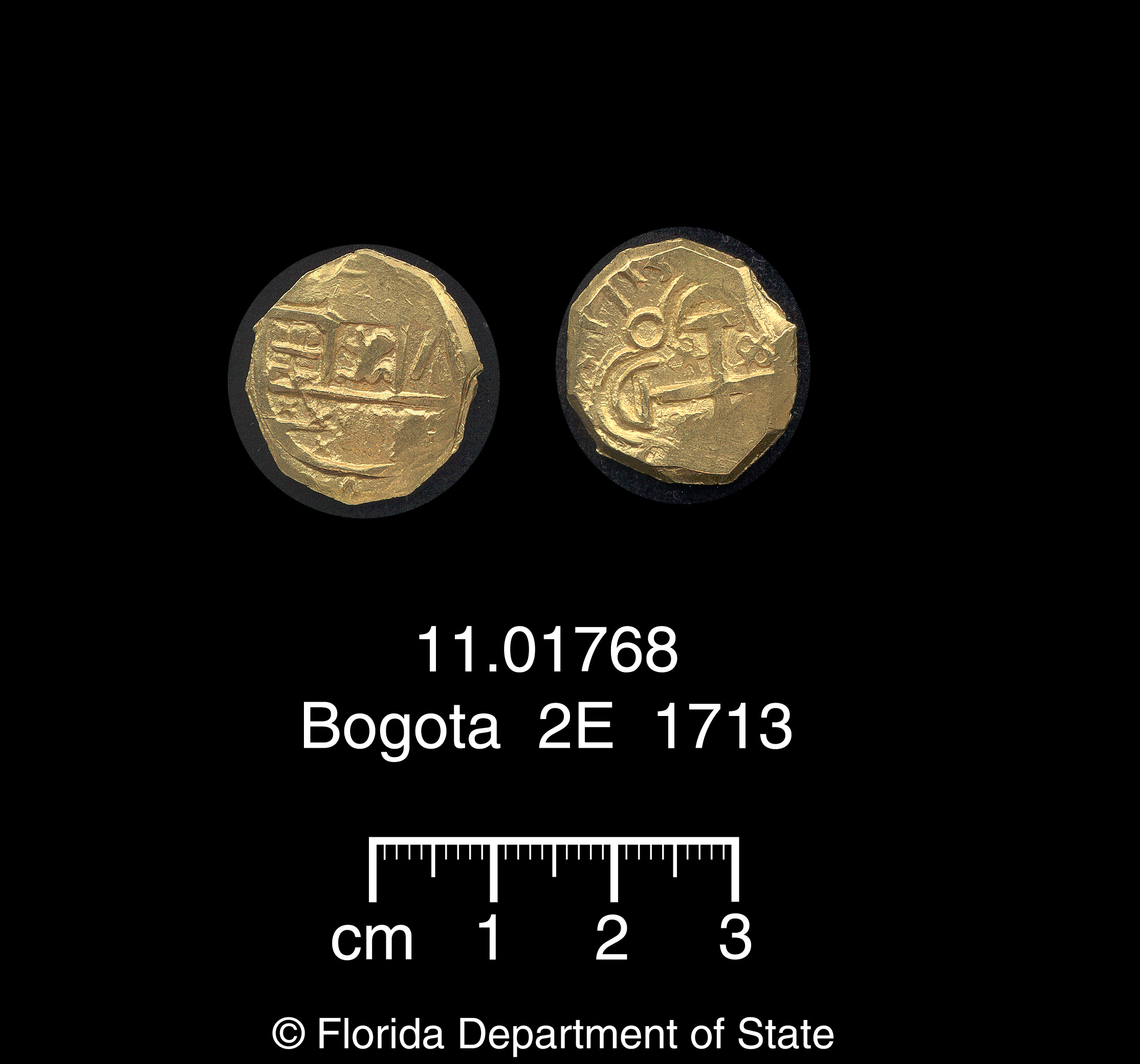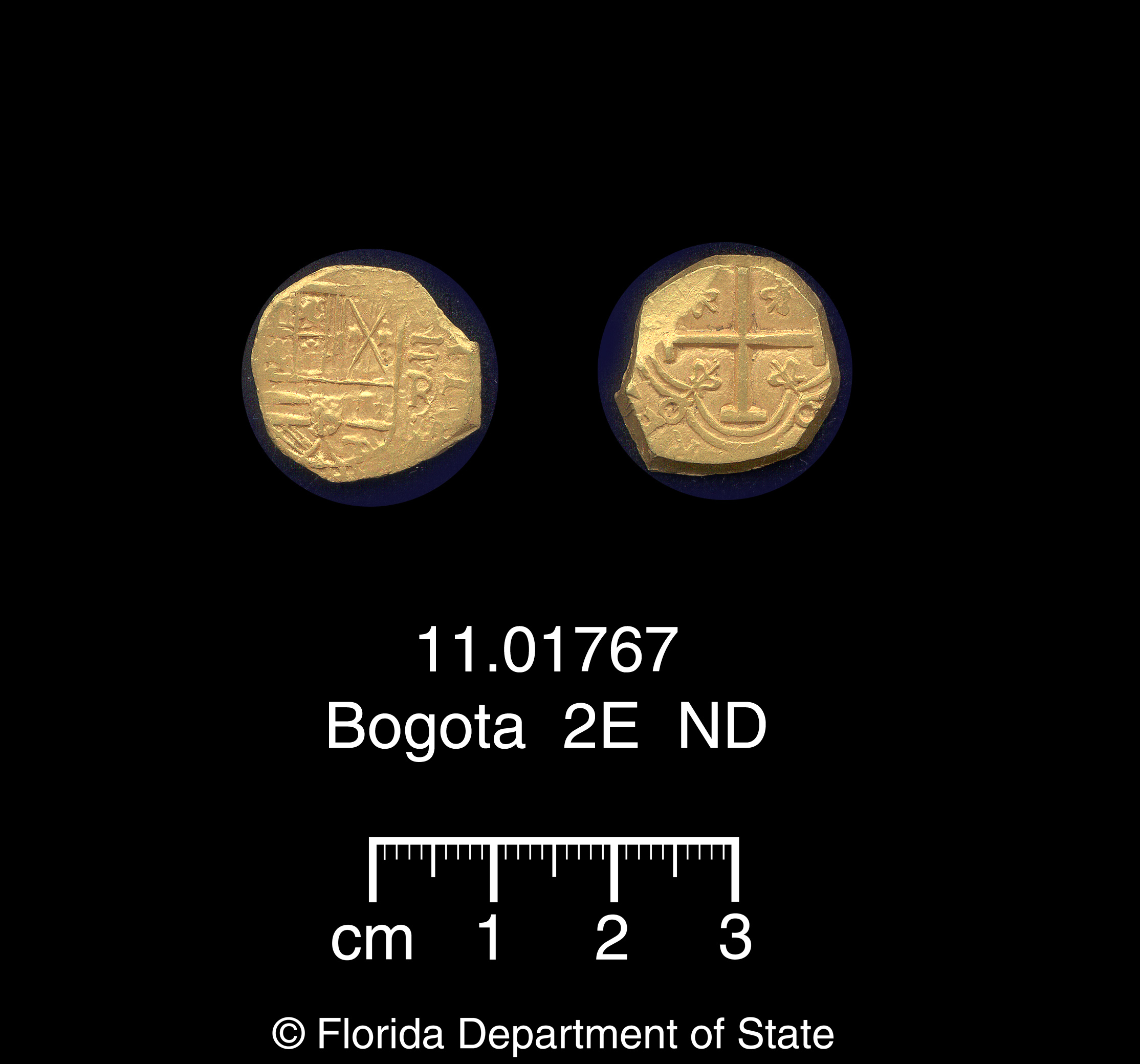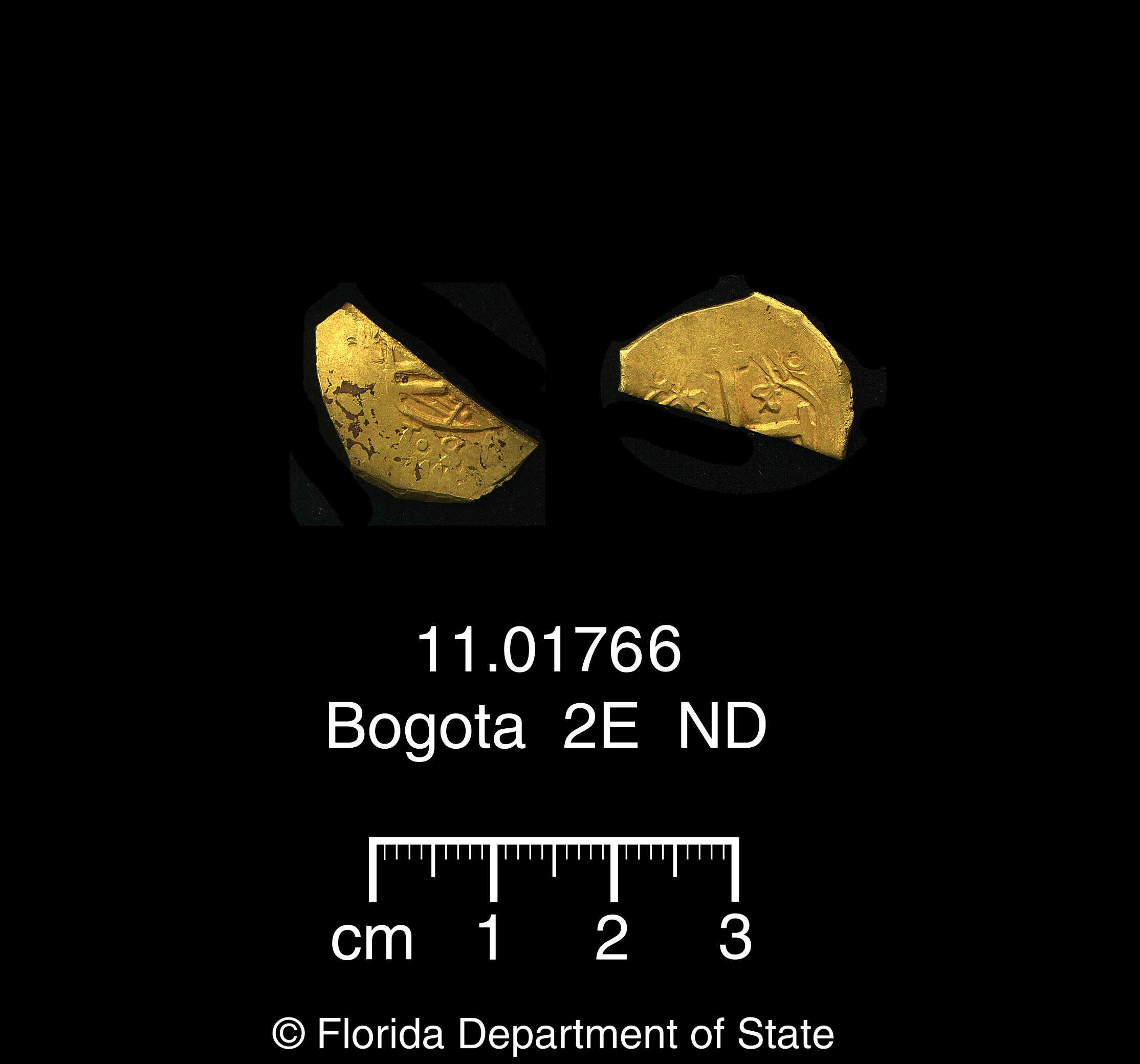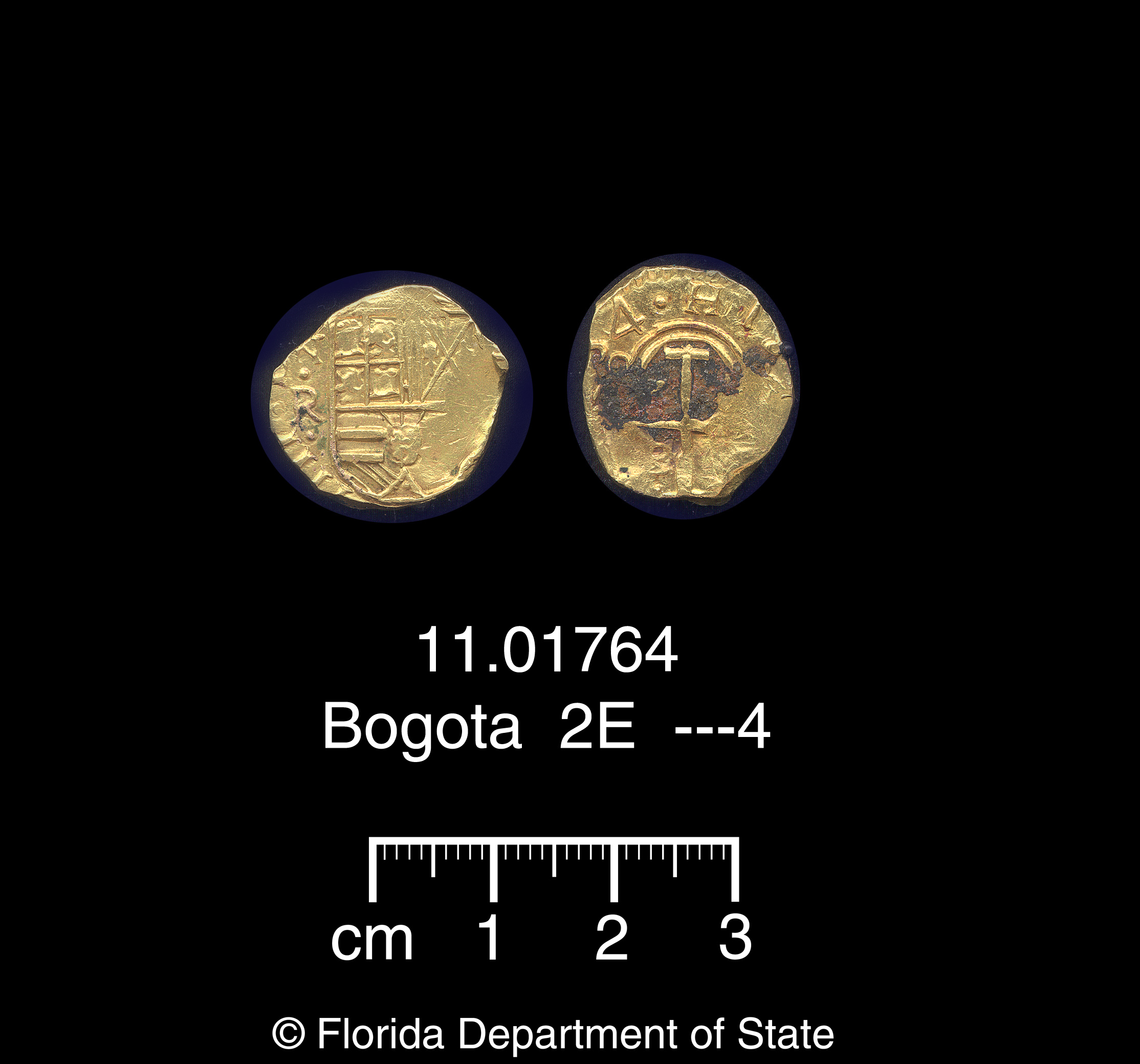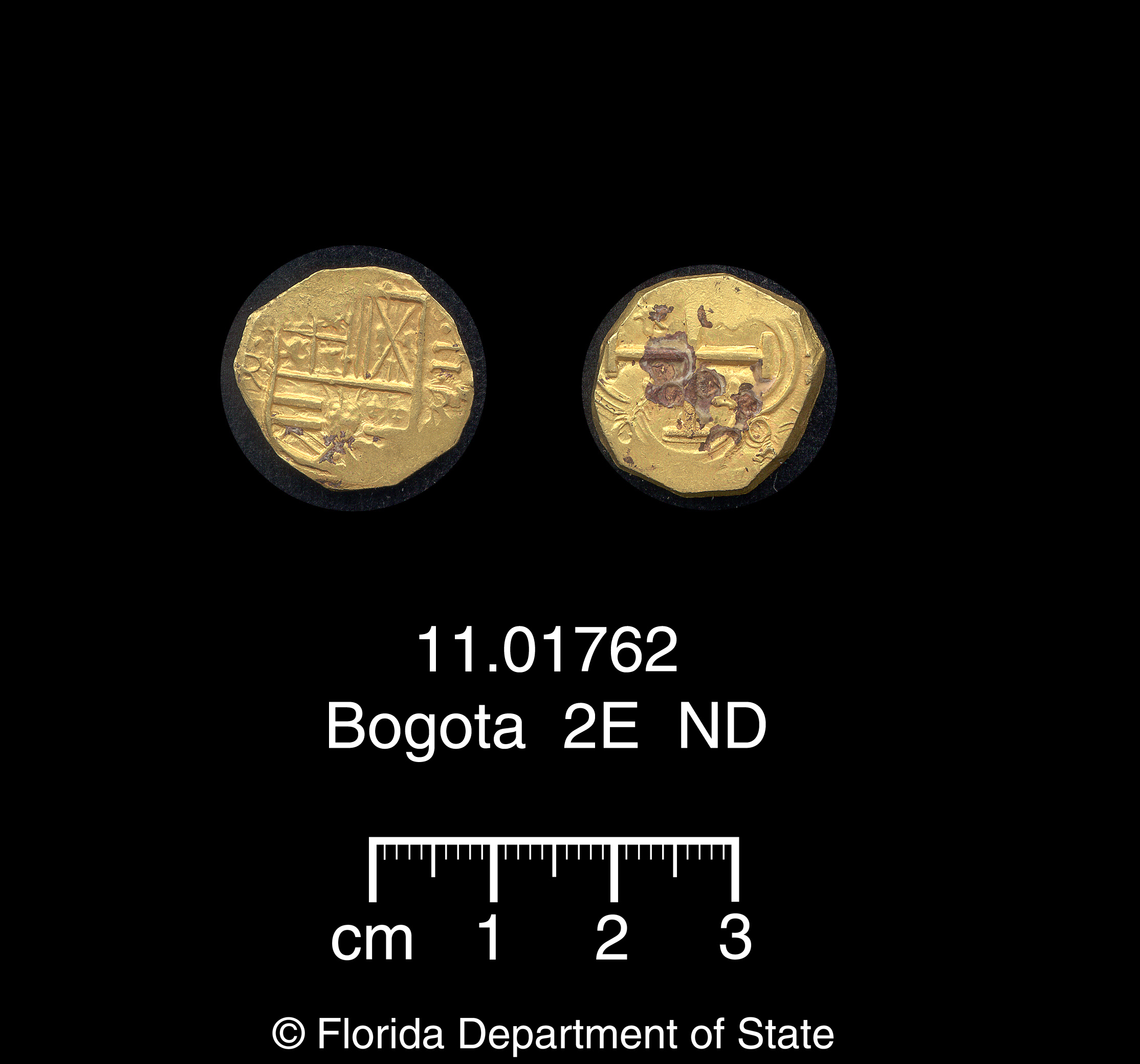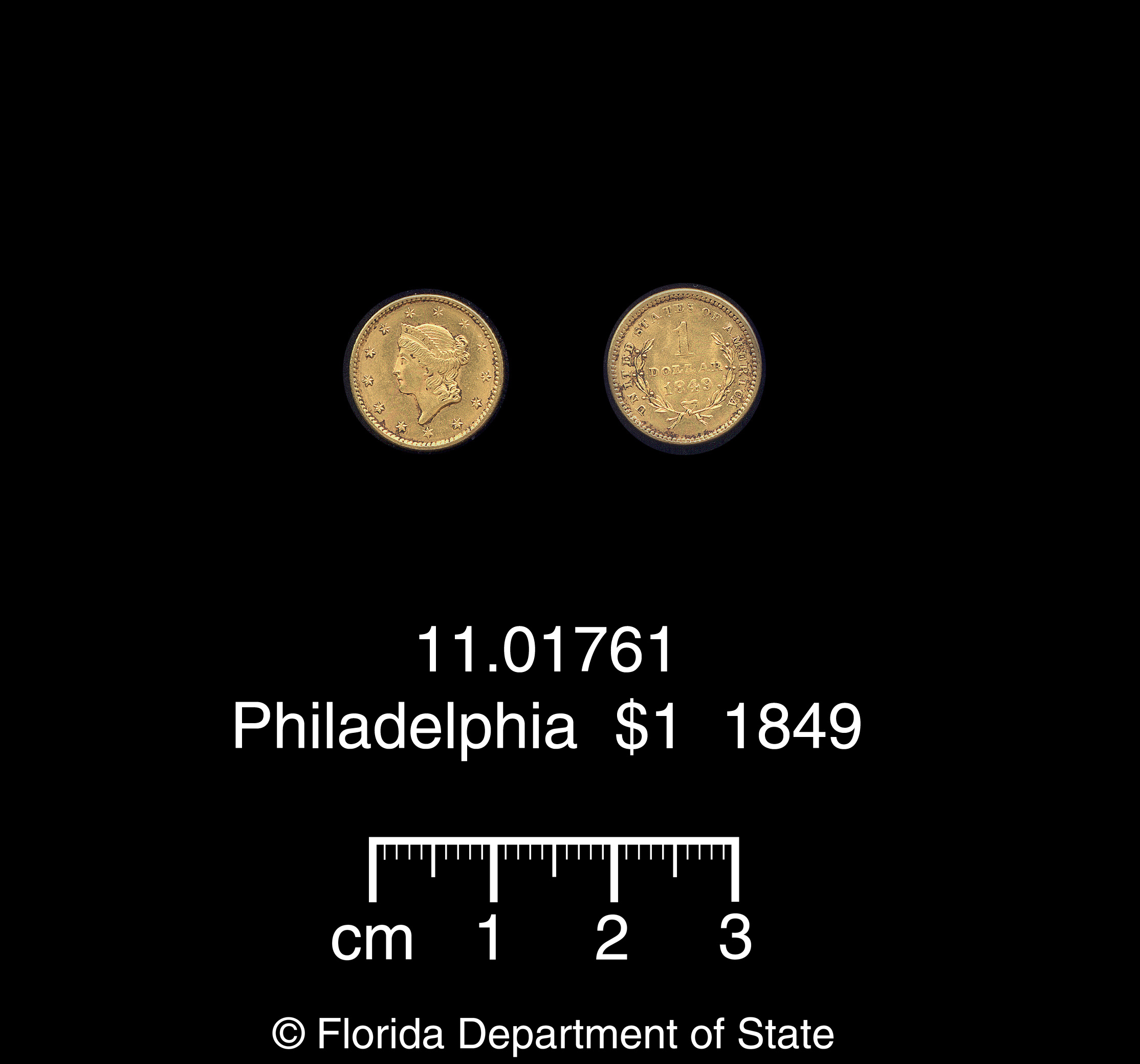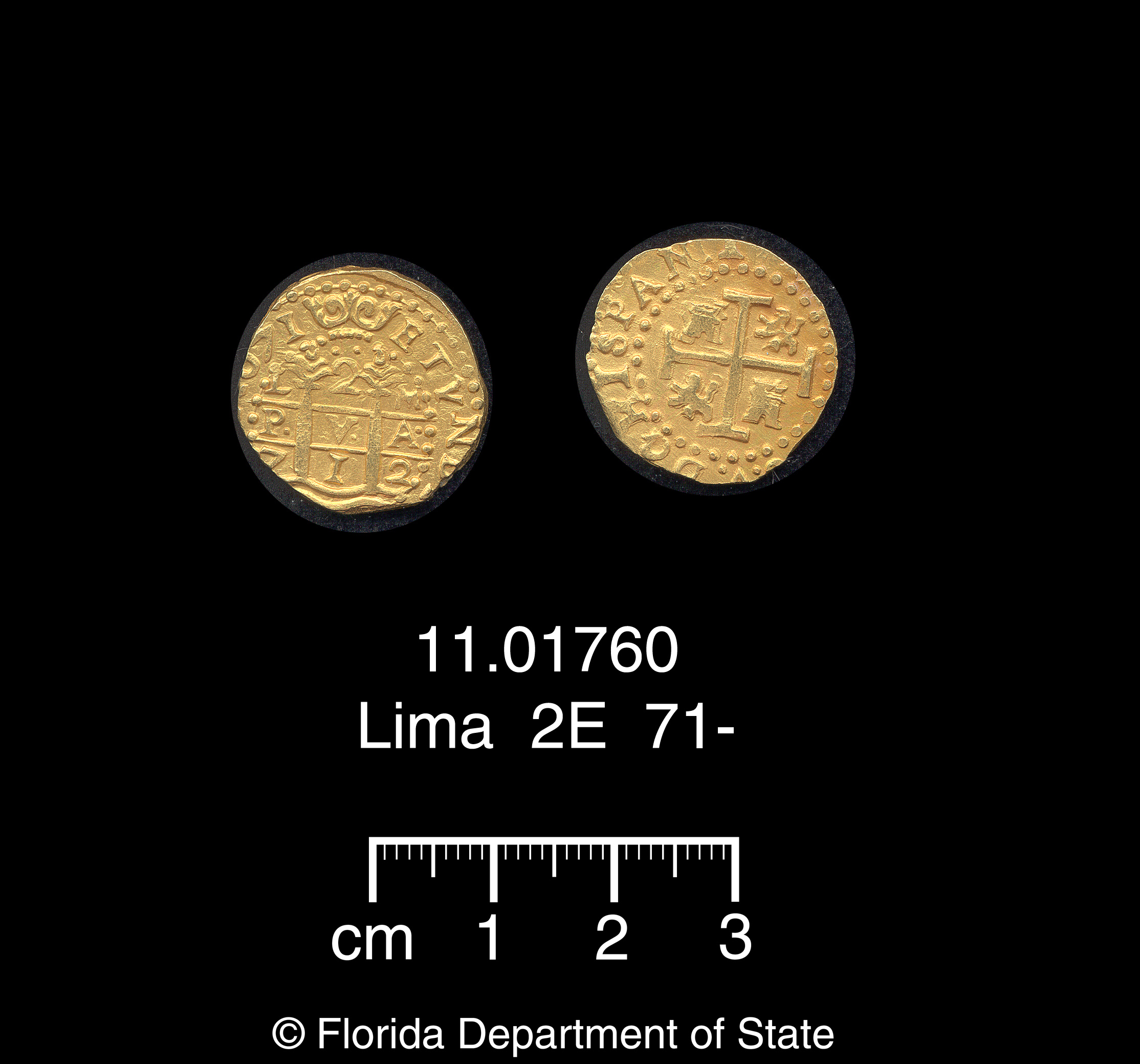The Florida State Collection of Spanish Colonial Gold Cobs
Since 1964 the State of Florida has been able to develop a world-class collection of Spanish Colonial gold coins, silver coins, and artifacts salvaged from the 1715 Fleet. Divisions with its licensed salvors occur at the beginning of the year following the field season. Originally the terms of Division were 75% to salvors, 25% to the State, based on an independent appraisal of value. This has subsequently been modified to the current 20% as the State’s share. Over the last 52 years Florida has acquired more than 1500 Spanish escudos in the Divisions. All of the working Spanish gold mints are represented. 78% of the escudos in the State Collection are from Mexico City, 10% from Lima, 11% from Santa Fe de Bogota, and less than 0.1% from the ephemeral gold mint at Cusco. Potosi, a prolific source of silver, struck no gold coins in the Fleet era. Cartagena, which had struck gold from 1625 to 1635, is not represented in any 1715 Fleet salvage. By denomination, one escudos (especially from Mexico) are the most common, comprising 40% of the escudos in the State Collection. Two escudos make up 31% of the collection. Eight escudos contribute 16% and four escudos 13%. By monarch, 88% of the escudos are struck in the name of the young Bourbon king Philip V, who on November 1, 1700 succeeded the last Habsburg monarch Carlos II. Coinage in the name of Philip V gold coinage does not begin until 1702 in Mexico, and until 1701 in Lima and Santa Fe. Santa Fe, we should note, almost immediately retreats to a posthumous coinage (1701-13) in the name of Carlos II. I5% of escudos are in the name of Carlos II (1665-1700). The earliest well-attested State coin from the Fleet is a 1689 Santa Fe two escudos—a 1649 Santa Fe two escudos is a salvor’s intrusion–while the latest coins are Mexican escudos of 1715.
Clicking on an individual image will open a larger image and allow you to scroll through images directly.
